Last week I drove out to Heidrun Meadery in Pt. Reyes to interview Jordan Thompson – horticulturalist, bee whisperer, flower farmer, and plant geek in the true and best sense of the term. As the head farmer/horticulturalist at the Meadery, Jordan’s role is to cultivate bee habitat and forage, educate visitors about bees and bee friendly gardening practices, produce bee friendly cut-flowers, and grow plant starts to support our local bees. After touring the beautiful buzzing grounds, we settled into the main greenhouse (which doubles as their tasting room) to discuss all things bees, mead and sustainable farming.
Lennie Larkin: Tell us about Heidrun Meadery.
Jordan Thompson: Heidrun Meadery was started by Gordon Hull in Arcata in 1997, but moved the operation to this 16-acre Pt. Reyes property in 2011. Gordon is a geologist by training, and started getting really into brewing after a course at UC Davis. While he was exploring brewing he tried mead, and wasn’t too impressed at first.
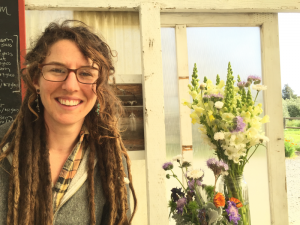
I think a lot of people have that reaction! I certainly did. But what we’re tasting here is another story altogether.
Right, because mead is traditionally sweet and syrupy. Mead is a fermented honey drink, and is made up of just honey, water, and yeast. It originated in Africa and is one of the oldest drinks out there. To try something new, Gordon came up with the idea of fermenting with champagne yeast, using the French method champenoise, which is how we still make all of our mead. As far as I know, we’re one of the few to do this in the world. It’s so unique and different, and I’m really proud to stand behind the elegant product we craft.
So you do it all right here on site- grow the flowers, feed the bees, collect the honey, and make the mead? I know you guys must have a term for that in this business. There’s ‘farm to fork’, ‘field to vase’…
Yup, ‘Flower to Flute!’ Gordon moved his operation from Arcata down to this property in Pt. Reyes Station in part so that he could be closer to the San Francisco market, but mostly so that he could keep bees in a warmer climate. He was really excited to get some property where he could support the local bees, create his own varietal, and see the process through from start to finish.
Tell us more about this process, from flower to flute. Act like I have no idea what’s involved (ehem).
Wow, it’s pretty involved, but here goes! The process starts with nectar, which is a sugary liquid produced by a flower to attract pollinators. Bees need nectar from flowers, it’s their source of energy… Pollen, on the other hand, is their source of protein and fats. Bees create honey as a way to store nectar as a rich, “shelf stable” energy source; otherwise, the nectar would ferment in its natural state.
Instead of digesting the nectar the honeybee only stores it in her stomach until she returns to the hive. Enzymes within her stomach begin breaking down the complex sugars in the nectar into simpler sugars – making it less likely to crystalize. At the hive the worker bee passes the nectar to another worker bee who then spreads it out among the honeycomb cells. Once the nectar is in the cell, they evaporate the water out of the nectar by furiously fluttering their little wings. Nectar is about 80 percent water whereas honey only contains about 15 percent. When the honey is at the proper consistency, the bees cap the cells with wax. It may sound simple, but amazingly, honeybees have created for themselves a food source that will keep for centuries.
Once the hive is heavily laden with capped honeycomb, our beekeeper Brad brings the honey supers (the boxes with honeycomb frames) back to the Meadery where he uncaps the frames with an uncapping tool that looks like a tiny rake, places them in a honey extractor (basically a large centrifuge that holds the frames) and spins out the honey into a warming bin and finally into buckets. Honey is usually collected during the late summer; taking only what we can and always leaving enough to ensure the bees will have enough for themselves.
Gordon then takes this honey and makes it into our mead! And finally our fantastic sales team, Carly and Lacey, will happily pour it into a champagne flute for you to taste the nectar like a honeybee.
Wow, that’s an amazing process! How do the different nectars influence the final mead product?
Not all nectars are equal. The nectar from an alfalfa blossom, for example, is lighter than the nectar produced by buckwheat. Nectar from the native California Coyote Brush is more pungent. Many of the pungent ones actually make great meads and honeys.
It takes about 8 ounces of honey to make a single bottle of our mead. That’s why it’s taken a few years to gather enough honey from our own bees to make our Pt. Reyes varietal – which reflects the diversity of plant life in this area and is made of nectar from all different sorts of plants. This year we’re so excited to finally be able to offer our own varietal, and it’s fascinating to see how the different soils, different plants, and levels of water access affect the terroir of the honey.
Terroir: commonly used in the wine industry to describe the sum of effects that the local soil, climate, geography has on the outcome of the product.
Speaking of soil, tell us about your land management practices here at Heidrun. How does this affect the ecosystem and the bees you’re feeding?
In my job I’m responsible for three main areas, and each one necessitates different soil and land management practices. In each role, however, I’m always focused on how to sustain and create a diverse, healthy, balanced ecosystem for our bees.
We’re open to the public for tours, tastings, educational opportunities and events, so the first area of my job is working to create a beautiful space. There are many things you can do in your own landscaping at home or place of work to create bee forage. Photinia and Escalonia, two common woody shrubs around here, are great food sources for bees. Sometimes it’s as easy as letting your hedges flower instead of cutting them back all the time. But mostly, plant selection is key to actually creating a bee sanctuary at your home.
Restoration for native plants is the second part of my job. We’ve got wildlife and riparian corridors, with tons of bobcats and other wild animals roaming around. This area will provide a huge bulk of off-season blooms for forage. Late fall and early winter are tricky periods for feeding the bees, but a lot of native plants like ceonothus and Coyote Brush help during this time.
And finally, the third area of my job involves row-crop farming. Principles of bee gardening tell us that an area of 4 foot diameter is what is ideal for quick and easy bee forage, where they can save energy and get the most bang for their buck in feeding from a small area. Row cropping is a great way to create this space. It produces nectar in a big way and allows me to stack functions, growing plants for sale along-side plants to feed the bees.
You’ve mentioned the term forage season a couple times, when does this happen around here?
Here in the temperate California Bay Area we enjoy and celebrate lovely weather pretty much year round. Honeybees leave the hive to forage, or collect pollen and nectar, when daytime temperatures at or above a comfortable 55 deggees. So in our area, depending on the day, we have a year round foraging season.
How many bee species can be found here?
In California, we’ve got 1,700 native species of bees because we have such diverse floristic provinces. Locally, it’s hard to say how many native species we have.
Any interesting ones that come to mind?
Well there’s the Bumble Bee, a really cute one called the Teddy Bear Bee, the Sweat Bee, which is metallic green, Carpenter Bee, Leaf Cutter Bee…interestingly, native bees are all pretty solitary, and so diverse, they come in all different shapes and sizes and have evolved to pollinate out native plants. They’re also more efficient than honey bees; they get up earlier and even come out in inclement weather.
Out of all the bees, only one makes honey in the traditional way most people recognize: the Honey Bee, or Apis mellifera . They are a European Bee. A bee’s range of flight is directly proportional to their size. So some of the small native bees don’t fly very far, maybe a yards distance from home. A honey bee, on the other hand, can fly up to a 4 mile radius.
At Heidrun Meadery we really want to support both types of bees, the Honey Bee and native. And the research shows that they work well together and don’t compete for food. UC Berkeley Urban Bee Lab, a great resource, has done a lot of research as to what both native bees and honey bees like to eat. This was a big part of my job when I first started here – combining plant lists, trying to figure out what plants are bee forage and what plants aren’t bee forage. As a human, it’s really hard for us to intuitively know what would make a great bee forage. Eucalyptus, poison oak – things we would never consider – the bees are all about it.
Can you talk a little bit about the importance of bees for our eco and food systems?
Bees are pollinators! Why is this so valuable? Not only do the native bees contribute to our diverse and beautiful native landscape, but European honeybees are responsible for pollinating 70% of our food worldwide. Without honeybee pollination in the United States, 1/3 of all the bites you take would not be possible.
What can gardeners do to help support our local, native bee population and encourage diverse pollination?
Gardeners can help sustain bee life in their backyard by improving access to bee forage and habitat in their backyard gardens by providing continual access to nectar and pollen rich flowers in patches of about 3.5 feet diameter and by planting pesticide-free plants with enough diversity to bloom at different periods of time throughout the year. In addition to this, many of our culinary herbs are great bee forage: mint, thyme, etc.
And finally, we’re sitting in this beautiful greenhouse; can you describe what you have in here for our readers?
Yes! So here at the Meadery I start a lot of plants from organic vegetative cuttings, as well as from seeds, and offer the starts for sale here at the Meadery. I’m really proud of our quality starts because so many of the transplants for sale out there are treated with harsh chemicals, neonicotinoids in particular. Neonicotinoids are really toxic insecticides that affect the central nervous system of bees. I always tell people to ask if the plants they are buying have been treated with these chemicals and I’m really happy to be able to provide SAFE bee-friendly plants.
A huge thank you to Jordan Thompson and Heidrun Meadery for inviting us to into their world for a day. To learn more about their unique meads, bees, and sustainable farming practices, take a day trip Point Reyes Station and enjoy a tasting and tour of the property!
You can visit their website by clicking here. Call 415-663-9122 or email info@heidrunmeadery.com to make your reservations now.







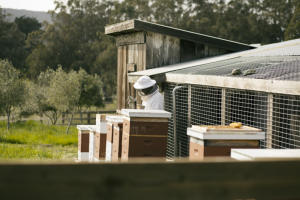
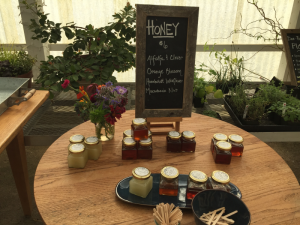
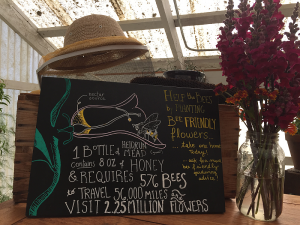
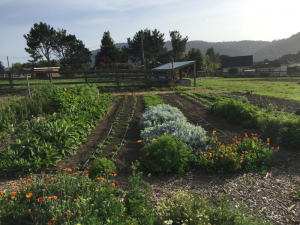
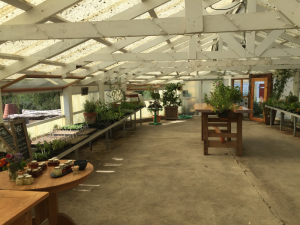
 Family
Family

